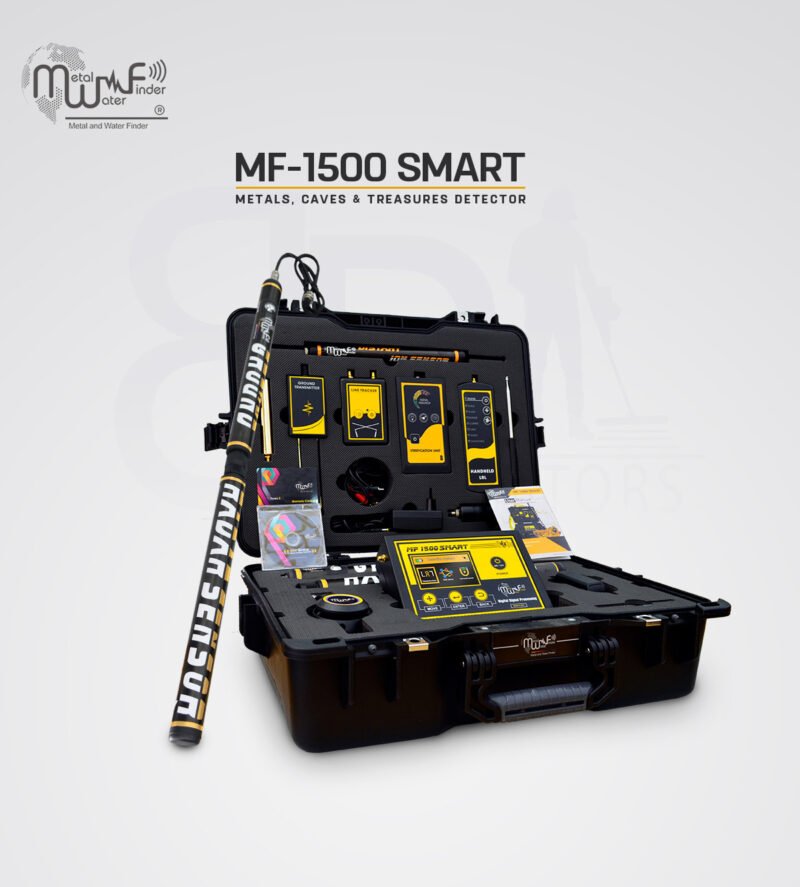Archaeology is a fascinating field that thrives on discovery. From ancient burial sites to forgotten underground chambers, the ability to locate hidden structures has always been both a challenge and a thrill for researchers. With advancements in technology, tools like cavity detectors have become essential companions for archaeologists aiming to explore beneath the surface without invasive digging. But the question remains: how reliable are these devices when applied to serious archaeological projects?
Reliability in archaeology depends on multiple factors—precision, depth capability, soil composition, and the technology behind the instrument. Let’s explore how cavity detection works, its practical benefits, and why devices like the MF 1500 Smart are increasingly being adopted by professionals worldwide.
How Do Cavity Detectors Work?
The core principle behind cavity detection is geophysical analysis. These machines are designed to detect differences in the density and conductivity of underground materials. When there is a void, such as a tunnel, tomb, or chamber, the signal behaves differently than when it passes through solid soil or rock.
This makes cavity detectors highly valuable in projects where delicate cultural artifacts or burial sites need to be located without disrupting the surrounding ground. In fact, many archaeologists find that a cavity detectors system can reduce unnecessary excavation by guiding teams to the most promising areas before they dig.
The reliability of such tools is not just about locating a void but also about distinguishing between natural formations and man-made structures. Advanced detectors often include software and calibration features to improve this level of accuracy.
Why the MF 1500 Smart Stands Out
Among the advanced devices available, the MF 1500 Smart has earned a reputation for reliability in archaeological and geophysical surveys. Unlike older or less specialized machines, it combines long-range scanning with depth measurement and advanced ground balancing features.
For archaeologists, this means more than just detecting an empty space—it means being able to determine the approximate size and depth of the cavity. The MF 1500 Smart is built with multi-frequency technology, making it adaptable to different soil compositions and geological conditions, which is essential when working on varied archaeological sites across deserts, plains, or rocky terrain.
Its ability to operate in difficult environments while minimizing false signals makes it one of the more dependable options for serious professionals.
Balancing Technology with Archaeological Practice
Despite the strengths of modern detection technology, it’s important to understand that no device is 100% foolproof. Archaeologists must always use cavity detection results in combination with historical research, site surveys, and in some cases, ground-penetrating radar or magnetometer data.
The reliability of a cavity detector increases significantly when it is used as part of a holistic archaeological process. By cross-referencing the data, professionals can reduce errors and avoid mistaking natural voids, such as sinkholes, for man-made structures. This balanced approach makes the tool invaluable without placing blind trust in it alone.
The Benefits of Using Cavity Detectors in Archaeology
One of the most immediate advantages of using cavity detectors is efficiency. Traditional excavation can be time-consuming and resource-heavy, with no guarantee of finding something valuable. Detectors help narrow down search areas, allowing researchers to focus efforts where the chances of discovery are highest.
Another benefit is preservation. Archaeological ethics emphasize minimizing damage to sites. By identifying cavities before excavation, teams can avoid unnecessary digging and protect fragile structures or artifacts that may otherwise be disturbed.
Cost-effectiveness also plays a role. While acquiring advanced tools like the MF 1500 Smart requires investment, the long-term savings in time and manpower often outweigh the initial expense.
Limitations and Challenges
Even with advanced features, cavity detectors do face limitations. Soil conditions such as high mineralization can sometimes create misleading readings. Depth capability also varies by model, and while some can detect structures tens of meters below the surface, others may only be suited for shallow surveys.
Operator skill is another crucial factor. Like any specialized tool, results improve when the operator has been properly trained to interpret signals and adjust settings based on site conditions. Many misreadings occur not because of the device itself but because of incorrect usage.
For this reason, professional archaeologists often pair detection technology with experienced operators who can ensure the results are both accurate and meaningful.
Case Studies and Real-World Applications
In practice, cavity detectors have been used to identify burial chambers in desert regions, locate hidden tunnels in ancient cities, and assist in surveys for lost underground water channels. These successes highlight their value in real-world applications where traditional excavation might not be possible or ethical.
However, there have also been cases where natural caves or geological features were mistaken for man-made cavities. These examples reinforce the importance of cautious interpretation and multidisciplinary collaboration.
The Future of Cavity Detection in Archaeology
Looking ahead, the integration of AI and advanced imaging into cavity detection systems promises to improve accuracy even further. Future models may be able to automatically distinguish between natural and artificial voids or integrate 3D mapping for clearer visualization of underground structures.
For archaeologists, this means fewer errors and more targeted excavation strategies. As the technology evolves, it will likely become even more reliable, cementing its place as a standard tool in the field.
Conclusion
So, are cavity detectors reliable for archaeological projects? The answer is yes—when used correctly and combined with proper archaeological methods. Devices like the MF 1500 Smart demonstrate how far the technology has advanced, offering precision, adaptability, and practical features that reduce both time and risk in fieldwork.
While no detector should ever replace traditional archaeological practices, they are powerful companions that improve efficiency and accuracy. For professionals committed to uncovering the past with care, cavity detectors represent one of the most dependable technological allies available today.



